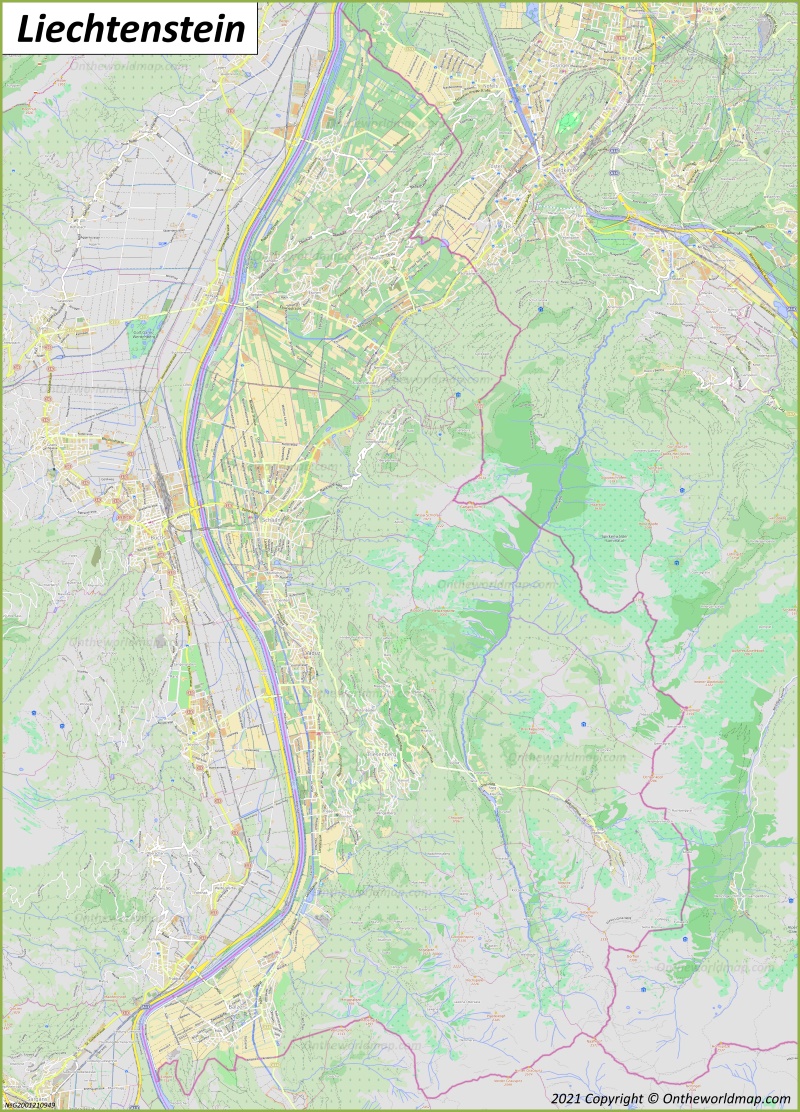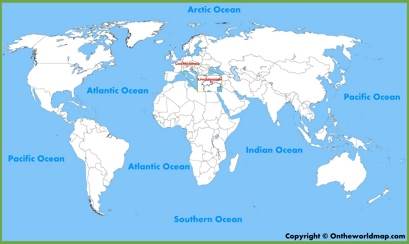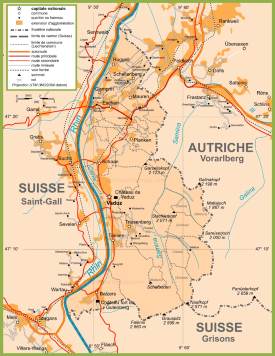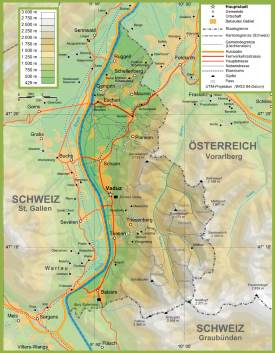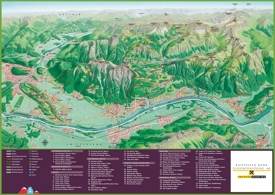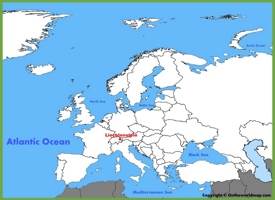Liechtenstein Map

Description:
This map shows governmental boundaries of countries; administrative divisions of Liechtenstein, major cities and towns in Liechtenstein.
Size: 800x914px / 126 Kb
Author: Ontheworldmap.com
You may download, print or use the above map for educational, personal and non-commercial purposes. Attribution is required. For any website, blog, scientific research or e-book, you must place a hyperlink (to this page) with an attribution next to the image used.
Detailed Map of Liechtenstein
Description:
This map shows roads, trails, rivers, peaks, buildings, cities, towns, villages, railways, railway stations and parks in Liechtenstein.
Size: 2850x3961px / 4.7 Mb
Author: Ontheworldmap.com
You may download, print or use the above map for educational, personal and non-commercial purposes. Attribution is required. For any website, blog, scientific research or e-book, you must place a hyperlink (to this page) with an attribution next to the image used.
Online Map of Liechtenstein
Map of Liechtenstein
About Liechtenstein
Liechtenstein, a small landlocked country in Central Europe, borders Switzerland to the west and south and Austria to the east and north. Despite its modest size, Liechtenstein is a sovereign state known for its high standard of living and strong economy.
The capital, Vaduz, serves as the political and administrative center, housing the official residence of the Prince of Liechtenstein and the seat of government. Vaduz is also a cultural center, with attractions such as the Liechtenstein National Museum and the Kunstmuseum Liechtenstein, which showcases modern and contemporary art.
Schaan, the largest municipality, functions as an economic center with a concentration of industry and businesses. Liechtenstein's economy is very diversified, with strong financial, manufacturing, and high-tech sectors. The financial services sector, especially banking and investment services, plays a crucial role due to the country's favorable legal framework and political stability. The manufacturing industry, especially precision instruments, electronics and pharmaceuticals, also makes a significant contribution to the economy.
Tourism in Liechtenstein attracts visitors with its alpine scenery and cultural attractions. Vaduz Castle, the official residence of the princely family, is an outstanding attraction, although it is not open to the public. Gutenberg Castle in Balzers offers historical information and scenic views. Tourists seeking an active vacation are attracted to hiking and skiing in the alpine regions.
Liechtenstein maintains a customs and monetary union with Switzerland, using the Swiss franc as its official currency. The country has no armed forces and relies on Switzerland for defense. The country is a constitutional monarchy in which the functions of government are divided between the prince and a democratically elected parliament.
Liechtenstein's commitment to education and innovation supports its economic success. Educational institutions such as the University of Liechtenstein provide opportunities for cutting-edge teaching and research. Despite its small size, Liechtenstein plays an active role in international organizations, including the United Nations and the European Free Trade Association, demonstrating its integration into the global community.
The Facts:
Capital: Vaduz.
Area: 62 sq mi (160 sq km).
Population: ~ 40,000.
Official language: German.
Currency: Swiss franc (CHF).
Geography of Liechtenstein
Liechtenstein, a small landlocked country in Central Europe, covers an area of about 160 square kilometers (62 sq mi). The country is divided into two main regions, Unterland (lower part of the country) in the north and Oberland (upper part of the country) in the south. The Rhine River forms the western border, while the eastern region consists of alpine foothills.
Liechtenstein has a temperate climate, characterized by cold winters and mild summers. The mountainous terrain influences the weather conditions: high altitudes receive a lot of snowfall, which is conducive to winter sports. Precipitation falls throughout the year, but is heaviest in the summer months.
The diversity of topography and climate results in a variety of ecosystems, from rivers along the Rhine to alpine meadows and forests. These natural features contribute to the country's picturesque landscapes and opportunities for outdoor recreation.
Brief History of Liechtenstein
The history of Liechtenstein began in 1719, when Holy Roman Emperor Charles VI united the counties of Vaduz and Schellenberg to form the Principality of Liechtenstein. The Principality gained sovereignty in 1806 as part of the Rhine Confederation under Napoleon's influence. In 1815 it became part of the German Confederation, maintaining its independence during various European upheavals.
The 20th century saw significant changes, including the collapse of the Austro-Hungarian Empire, which prompted Liechtenstein to strengthen ties with Switzerland. The Swiss franc was adopted in 1920 and a customs union was established in 1923. During both World Wars, Liechtenstein remained neutral, preserving its sovereignty. After the war, the principality turned into a prosperous financial center, maintaining its status as a constitutional monarchy with a strong economy and high standard of living.
Maps of Liechtenstein
Cities of Liechtenstein

